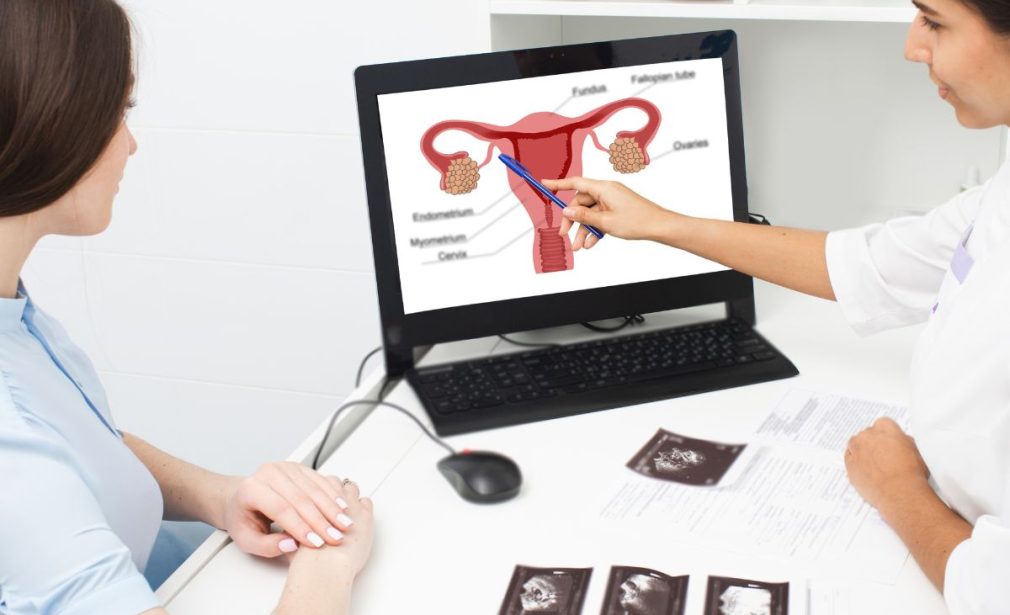When discomfort becomes a daily burden, learning what you need to know, and how to find relief that lasts is crucial. Pelvic pain is something many women in Montgomery and PG County, MD, experience, but few talk about openly.
It might start as a dull ache, a sharp cramp, or a feeling of pressure that just won’t go away.
For some, it’s tied to a monthly cycle. For others, it’s there every day, interfering with work, relationships, and basic routines.
But here’s what too many women don’t hear often enough, pelvic pain is not something you have to just live with.
Read ahead to get a better grasp on understanding pelvic pain, and within the few minutes it takes to peruse this article, you’ll feel more ready than ever before to seek out the kind of treatment and care that is right for you.
Understanding Pelvic Pain: What Does It Even Mean?
So what exactly qualifies as pelvic pain?
It’s any discomfort that occurs in the lower abdomen, between the belly button and the groin.
It can be acute and sudden, or chronic and ongoing. It might come and go, or it might feel constant.
For some women, it’s connected to specific triggers like menstruation or intercourse. For others, it’s hard to pin down.
What Are the Common Causes of Pelvic Pain?
There’s no single explanation for pelvic pain, and that’s part of what makes it so frustrating.
A number of gynecological, urological, gastrointestinal, and musculoskeletal issues can be involved.
Here are some of the most common causes and culprits:
- Endometriosis: This condition occurs when tissue similar to the lining of the uterus grows outside of it, often leading to inflammation, scarring, and intense pain, especially during menstruation.
- Fibroids: These noncancerous growths in the uterus can cause pressure, heavy periods, and discomfort.
- Ovarian cysts: Fluid-filled sacs on the ovaries can cause sharp pain if they rupture or become twisted.
- Pelvic inflammatory disease (PID): This is an infection of the reproductive organs, usually caused by untreated sexually transmitted infections, and can cause severe, lasting pain if not treated promptly.
- Interstitial cystitis: Also known as painful bladder syndrome, this condition causes pressure and discomfort in the bladder and pelvic region.
- Irritable bowel syndrome (IBS) and constipation: Digestive issues are often overlooked but can significantly contribute to pain in the pelvic area.
- Musculoskeletal problems: Tension, spasms, or weakness in the pelvic floor muscles can mimic or worsen other causes of pain.
It’s also possible to have multiple conditions contributing to symptoms at the same time, which is why a thorough evaluation with an experienced expert in the field is so important.
When Should You Seek Help for Pelvic Pain?
This is a common and important question.
If pelvic pain disrupts your daily life, keeps recurring, worsens over time, or is accompanied by other symptoms like abnormal bleeding, bloating, urinary changes, or painful intercourse, it’s time to talk to a provider.
Pain is your body’s way of signaling that something isn’t right. Listening to it early often leads to quicker answers and better outcomes.
What if the pain is mild? Should you still bring it up? Absolutely.
Even low-level discomfort, if persistent, deserves attention. Too often, women downplay or normalize their pain. They tell themselves it’s just part of being a woman or that they’re overreacting.
But you are not overreacting. We are rarely taught to learn to listen, but it’s of the utmost importance to learn to listen to our bodies. You know your body better than anyone else. And if you feel like something is off, you owe it to yourself to find some answers.
How Is Pelvic Pain Diagnosed and Treated?
The process starts with a detailed health history and physical exam.
Your provider may ask about the timing, location, and nature of the pain, along with any related symptoms.
Imaging tests like ultrasound or MRI can provide a clearer picture of your reproductive organs.
Sometimes laparoscopy, a minimally invasive procedure, is used to directly view the pelvic area and diagnose conditions like endometriosis.
Treatment depends entirely on the underlying cause.
It may include medication, physical therapy, hormone therapy, dietary changes, or surgical options. But care should never be one-size-fits-all.
The best plans are tailored not only to your diagnosis but also to your lifestyle, comfort level, and goals.
Some women benefit from pelvic floor therapy, which uses guided exercises and techniques to relax or strengthen the muscles that support the pelvic organs.
Others respond best to integrative approaches that include dietary shifts, acupuncture, and stress management.
The goal is always to address both the source of the pain and the impact it’s having on your quality of life.
There is no substitute for an experienced and knowledgeable provider.
Living With Pelvic Pain Is Not Something You Have to Accept
Too often, women go years without real answers or relief. They see multiple providers, try different treatments, and still end up feeling unheard.
But pelvic pain deserves to be taken seriously. It deserves compassion, careful investigation, and comprehensive care, and that is the kind of treatment all of our patients here at Capital Women’s Care can always expect.
If you’re experiencing pelvic pain that doesn’t go away, or if you’re simply tired of pushing through the discomfort without clear support, it’s time to take the next step.
Relief is not just possible, it’s within reach. Call us at CWC today at 301-593-8101 to schedule a conversation with someone who will listen, believe you, and help you find a way forward.
Or, if you’re ready to get started right away, book an appointment online at either of our locations today!



